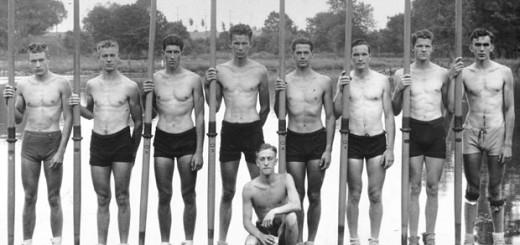Madigan on Moving
Jamie Madigan wrote about motion controls and the concept of presence on his blog, The Psychology of Video Games. It’s a great post and very much worth a read. In it, he references a paper by a group of researchers at Cleveland State University. He writes:
They were interested in how “naturally” a controller was used to play a game and what effect that had on presence and enjoyment. To kick things off, they proposed an interesting typology of natural control mapping.
The status of this paper is unclear: Madigan writes that it was “published. . . earlier this year in the journal New Media & Society,” and he provides an incomplete citation. I couldn’t find the article on the journal’s website (non-university folks will have trouble even looking, as it’s behind a paywall), and he implies in a footnote that he got the article from one of the researchers; so my guess is that it has been accepted for publication, but has not yet been published. If I’m right, that’s too bad; it would have been nice to be able to read the article that the post is about.
The concept of presence is very interesting: it goes directly to what games do to us when we play them. Looking to make a connection between motion controls for video games and the feeling of presence, Madigan writes that the researchers
were interested in whether more natural mapping of controls would lead to greater self-reports of presence while playing games, so they ran two experiments. In the first, they had one group play Tiger Woods PGA Tour 07 on the Nintendo Wii using the wiimote like, appropriately enough, a golf club. Another group played the Playstation 2 version of that same game using the dual shock controller. The results were that the wiimote did indeed feel more natural, as measured by questions like “The actions used to interact with the game environment were similar to the actions that would be used to do the same thing in the real world.” No surprise there, but they also found that use of such controls did correlate with spatial presence (“To what extent did you experience a sense of ‘being there’ inside the environment?”) and people who played the game on the Wii were more likely to report experiencing presence than those who played with the PS2 controller.
Interesting stuff! Here’s why I really want to read the source article: the conclusion that motion controls increase the feeling of presence seems solid. But it is also limited by video games’ immature theory of space as well as the conventions of genre. If motion controls increase our feeling of “being there”, what about games that don’t have a reasonable “there”? This lack of “thereness” might be due to genre conventions (Lumines) or it might be a result of poor spatial theory (Viva Piñata).
I also wonder what, if anything, the research says about the interaction of motion controls with other design elements in the creation of presence. Short version: I think that motion controls might create presence in specific types of games (Tiger Woods) while destroying it in others (imagine playing Cave Story or Super Meat Boy with motion controls).
Madigan also writes that he feels this article’s typology of controls is flawed “because it lacks a place for motion-tracked controllers that are used in ways that are not asking you to mimic holding something specific” (like when you wiggle the Wiimote to make Mario spin). I think that these types of controls actually fit very well in the first referenced category:
Directional natural mappings are the least natural, represen[t]ing simple up/down/left/right mappings and maybe some buttons. Think Street Fighter 4: up to jump, left/right to move, down to crouch, and buttons to punch or kick.
You move your thumb to push the jump button just like you move your wrist to execute Mario’s spin. Outside of the game’s logic, neither of the movements have anything to do with the action executed on the screen. The only difference between them that I can see is our perspective: we’ve had a few decades to get used to pushing buttons, but just a few years to wiggle our Wiimotes. Is wiggling just more exotic than pressing?
The important thing is what the movement represents: wiggling to make Mario spin makes as much sense as pushing a button to make him jump. Both require motion and neither seems likely to create presence.


